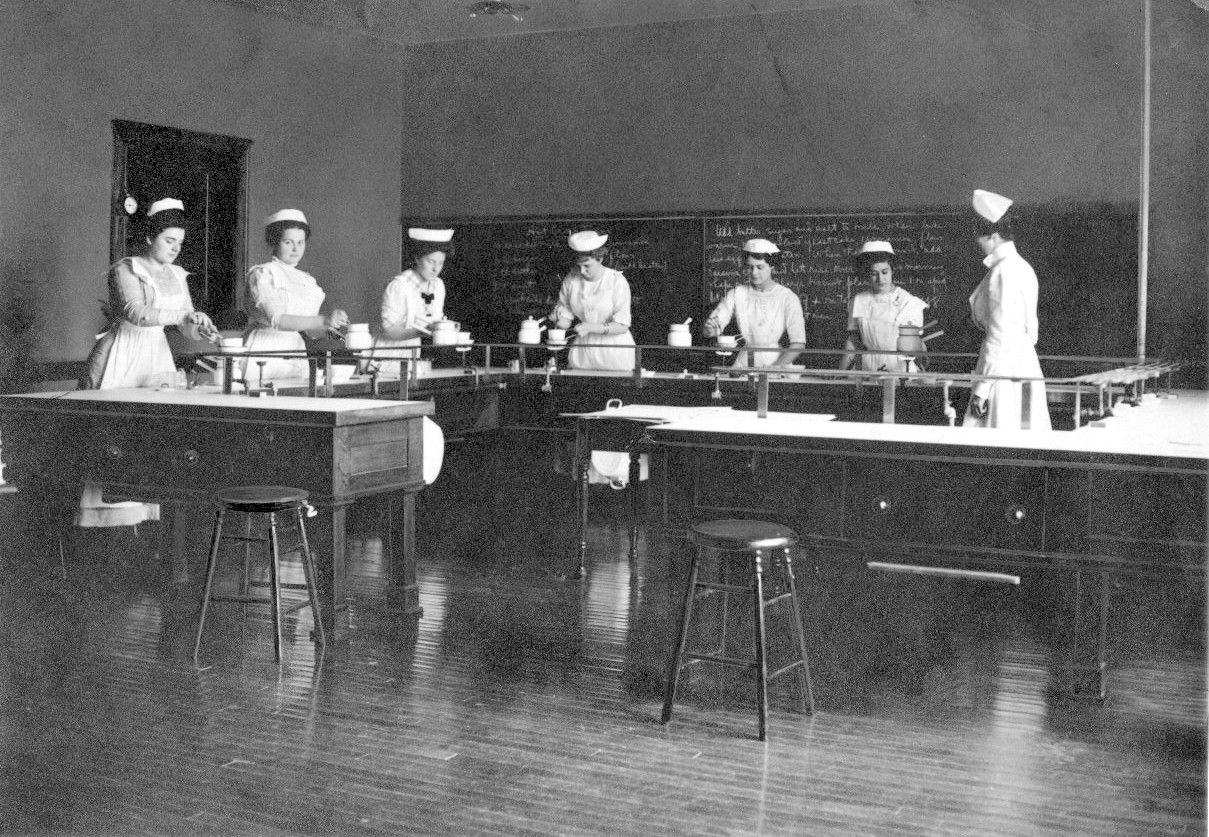
Domestic Science class, 1917. Courtesy Lake Forest Academy Archives.
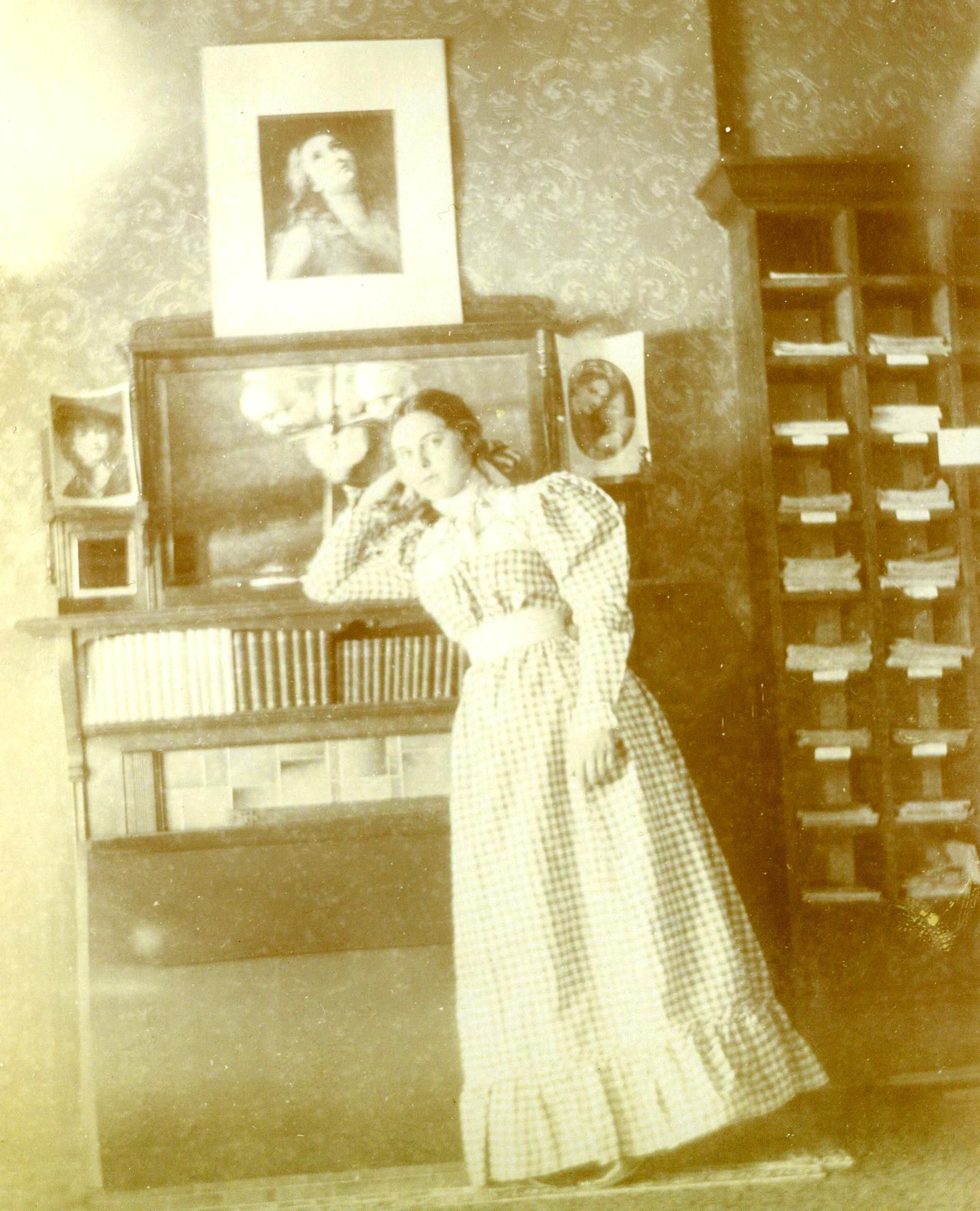
Library, 1895. Courtesy Lake Forest Academy Archives.

Domestic Science class, 1917. Courtesy Lake Forest Academy Archives.
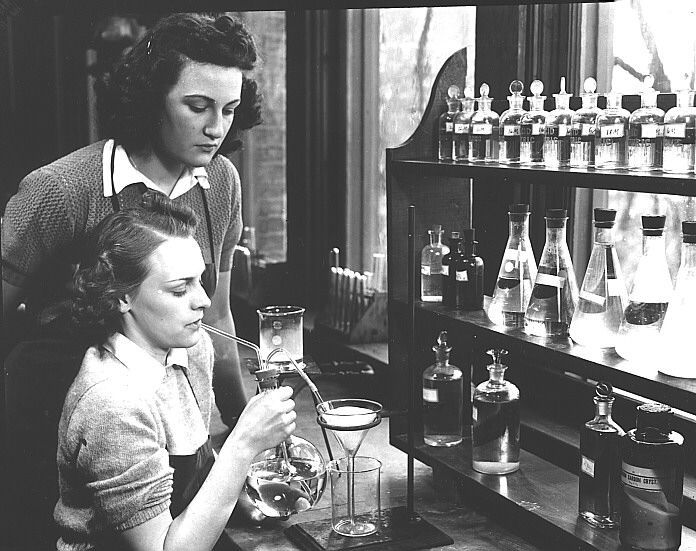
Chemistry lab, 1940s. Lake Forest Academy Archives.
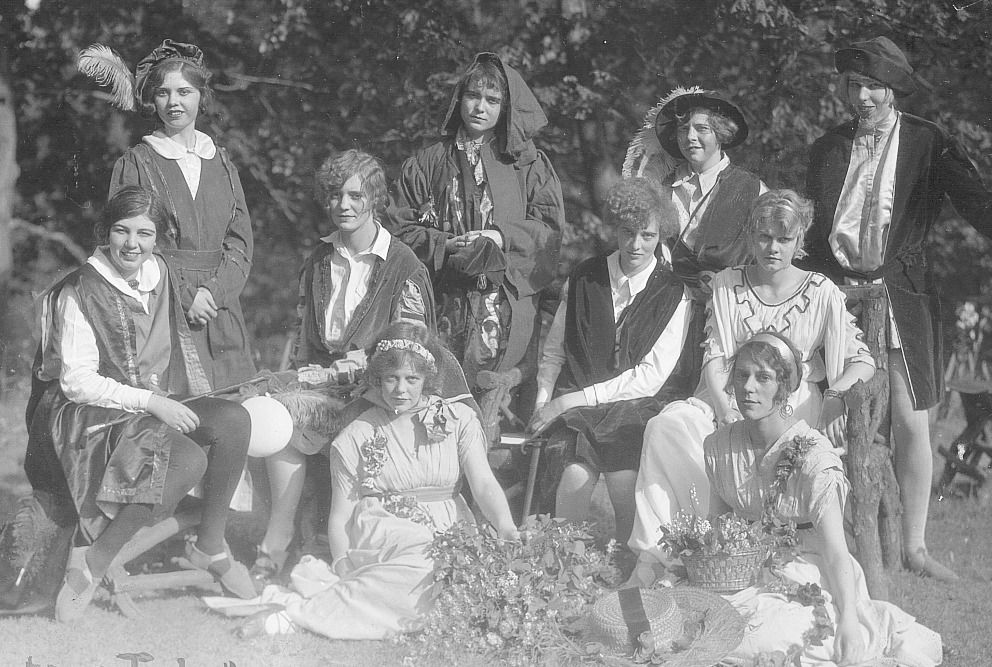
May Day production of The Winters Tale; Jean Harlow sitting far right 1927. Courtesy Lake Forest Academy Archives.
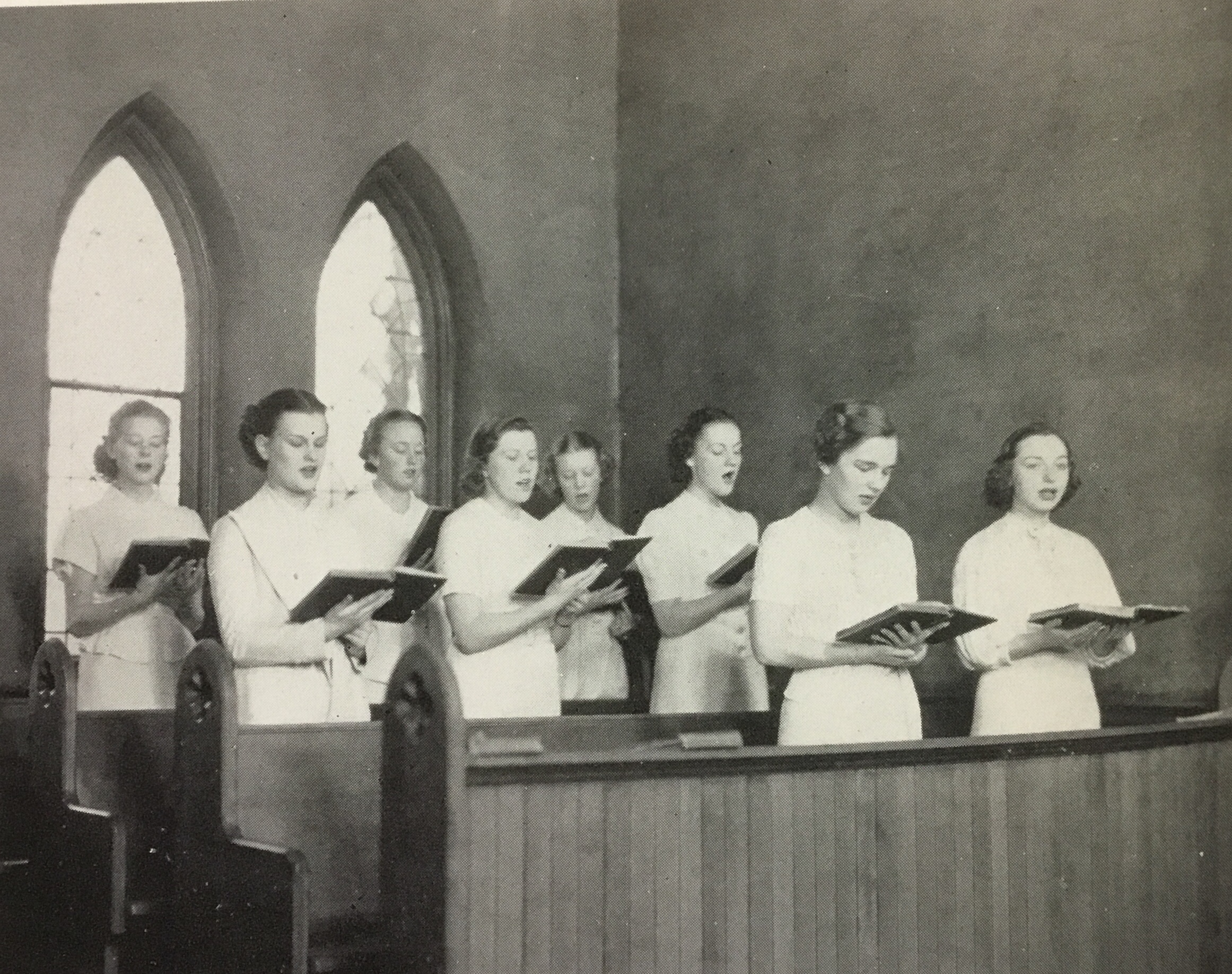
Choir in Chapel, 1937. Courtesy Ferry Hall Archives.
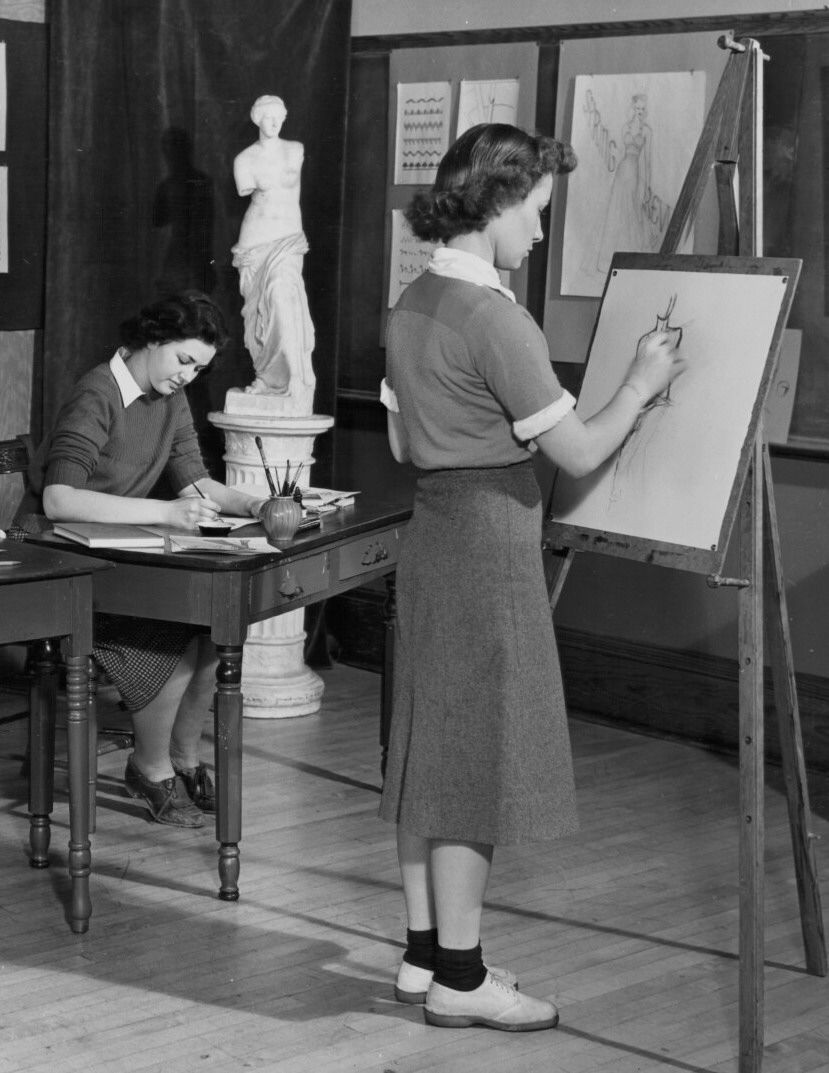
Art class, 1940s. Courtesy of Lake Forest Academy Archives.
By Rita MacAyeal, Director of the Library and Archivist
From its inception, Ferry Hall offered its students a rigorous academic curriculum in contrast to many of the “finishing schools” of its era. Students studied literature, math, Latin, history, modern languages, philosophy, government, and sciences. There was also a very strong music and fine arts program at the school. The Ferry Hall building included large “recitation” rooms and music practice rooms, and students had access to a library, and art gallery, and a scientific laboratory.
In addition to academics, students participated in a variety of extra-curricular activities and clubs including literary publications and service societies. Club activities varied over the years and often reflected the times—for example during the early 1900s, the Y.W.C.A. (organized in 1888 at Ferry Hall) made dolls for the children of Hull House in Chicago, and the Schools-At-War Committee sold war bonds for the troops during WWII.
From its opening year, Ferry Hall embraced the fine arts in its curriculum. All students in the early years learned to sing choral music and could opt to take individual music or art lessons from college professors and associate instructors. There were even students who attended Ferry Hall part time just to take fine arts classes. Into the 1880s, Ferry Hall offered a collegiate program within LFU to grant music students at Ferry Hall a Bachelor of Music diploma.
The earliest dramatic performances tended to be classical in nature-- for example in 1876 students performed a “Literary Soiree” called Shakespearean Pictures in which they enacted dramatic characters from several of the Bard’s plays. Other early theater productions and dance shows occurred on May Day as part of the festivities. A tradition also developed of having an annual concert and theatrical performance to celebrate the winter holiday season.
In 1946 FH and LFA held their first joint production when they performed the play “Tovarich”, but the two schools did not consistently perform together until the 1960s. In May 1971 the two schools combined together to hold the first annual Fine Arts Festival. This event consisting of workshops and performances in all area of the arts continued into the 1980s, well after the merger of FH with LFA.